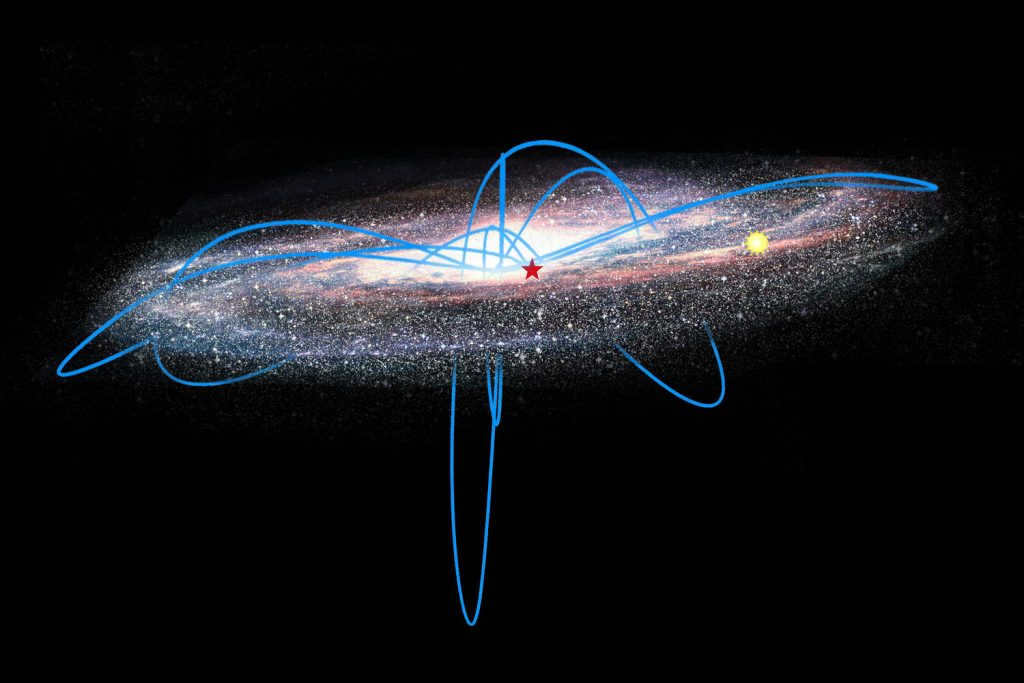The phenomenon of retrograde motion in celestial objects remains an enigma in the vastness of the universe. Among the planets in our solar system, it is well-established that there is one planet that rotates in the opposite direction. However, the scientific community continues to engage in ongoing discussions and debates to unravel the underlying reasons behind this peculiar phenomenon.
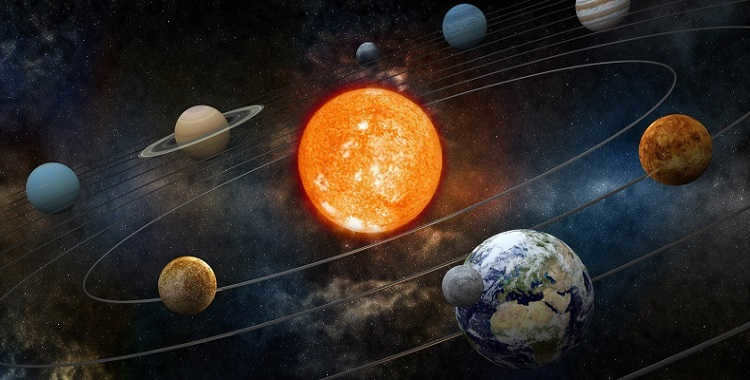

What Causes Retrograde Rotation?
If we observe our solar system “from above,” from the hypothetical North Pole of the universe, we can observe that all celestial bodies orbit the central star in one direction. Additionally, they all rotate counterclockwise on their own axes, except for a few bodies that rotate in the opposite direction.
These bodies include Venus and Uranus, as well as Pluto, which recently lost its planetary status, its moon Charon, and the Neptune moon Triton. The rotation of these bodies is referred to as retrograde rotation.
Meanwhile, Venus spins in the same direction as Earth, Mercury, and other celestial bodies, but its orientation appears reversed because the planet is essentially flipped upside down.
There are at least three potential explanations for the retrograde spin of certain objects:
- Alterations in the gravitational field of the planet itself and the influence of neighboring astronomical bodies;
- The impact of powerful solar tides;
- An abrupt shift in rotation direction caused by collisions with other cosmic elements.
Determining the rotation direction of planets can be accomplished through various methods: observation through radio telescopes on Earth and space observatories in orbit, as well as mathematical calculations.
Axis Tilt and Rotation Direction
The tilt of a planet’s axis indicates its rotation direction. This refers to the angle between the imaginary line around which a celestial body rotates and the perpendicular line to the ecliptic, which represents the plane of its orbit around the sun.
If this angle falls within the range of -90 to +90 degrees, it is considered that the planet has a direct rotation, aligning with the overall rotation direction of most celestial bodies.
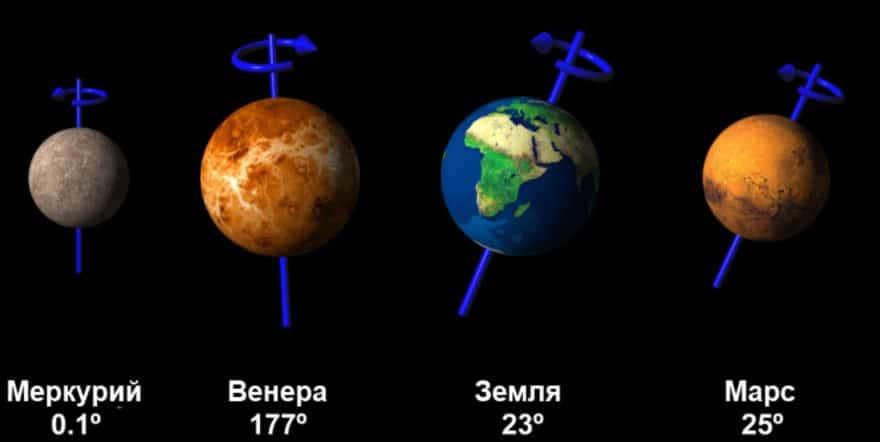
When the angle value falls within the 90-270° range, the motion becomes retrograde.
The natural satellites of planets that orbit the Sun exhibit a similar inclination.
However, they exhibit a distinct angle – the angle between the satellite’s rotational axis and the plane that intersects its parent planet along the equator.
What causes Venus to rotate differently
Out of all the celestial bodies in our solar system that rotate in an unconventional manner, the second planet from the Sun has received the most thorough investigation.
One hypothesis that seeks to explain the reasons behind its retrograde rotation posits that during the formation of the solar system’s planetary bodies from a spinning gas-dust disk, the dust and energy conglomerate that would eventually become Venus collided with the forming Mercury, causing it to suddenly rotate in the opposite direction from the rest of the protoplanets – in a clockwise fashion.
Another theory proposes the following: it is Venus’s excessively high and dense atmosphere that is to blame for its retrograde rotation – the atmosphere acts as a brake, counteracting the planet’s natural rotation and causing it to twist in the opposite direction.
Another fascinating theory suggests that the body underwent a flip due to the powerful gravitational tides exerted by the central luminary, as well as the resulting friction between the planetary mantle and core.
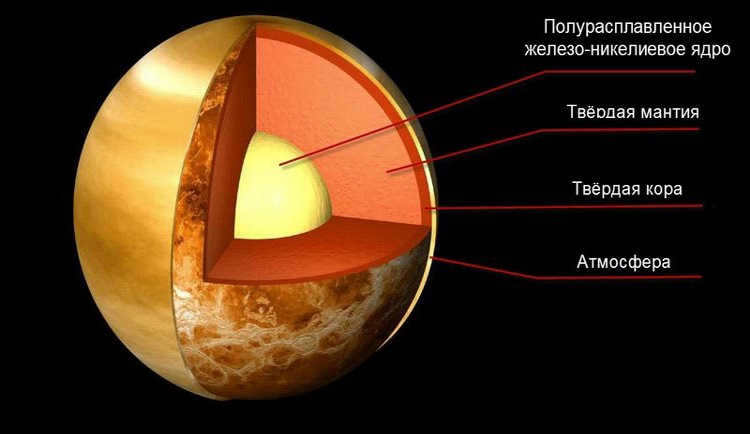
The significant inclination of Venus’ axis, nearing 180°, poses a challenge to the occurrence of seasons on the planet – Venus experiences a perpetual summer. It takes Venus 225 Earth days to complete one orbit around the sun, while its rotation on its axis takes approximately 243 days. Consequently, a sideric day on this celestial body is longer than its solar year.
“The Inclined Planet”
If Venus has an axis inclination of 177° and is “inverted,” then the seventh planet from the Sun, with a similar parameter of 98°, is referred to as “lying down.” Scientists describe Uranus as “rotating while lying down.”
On Uranus, a unique phenomenon occurs where each season lasts for 42 years. During the solstice, whether it’s winter or summer, one of Uranus’ poles is aligned with the central star of our solar system, resulting in a polar day on the adjacent hemisphere. On the opposite side of the planet, facing the transneptunian objects, a polar night persists.
Currently, there is a significant variation in the duration of daylight and darkness at the equator. Uranus orbits the Sun once every 84 years, while it completes one rotation on its axis in slightly more than 17 Earth hours.
Reasons behind the retrograde motion of Pluto
According to scientists, it is believed that Pluto is actually a fragment of a larger celestial object that broke apart following an explosion and was somehow detached from its original place near Neptune. The other part of this object, which was larger in size, remained in orbit around Neptune and eventually became a natural satellite of the planet Triton.
However, Pluto, along with a smaller fragment, gained enough speed to escape the gravitational pull of the “Blue Giant” and became an independent dwarf planet. These fragments now orbit in the opposite direction, retrograde to their neighboring celestial bodies.
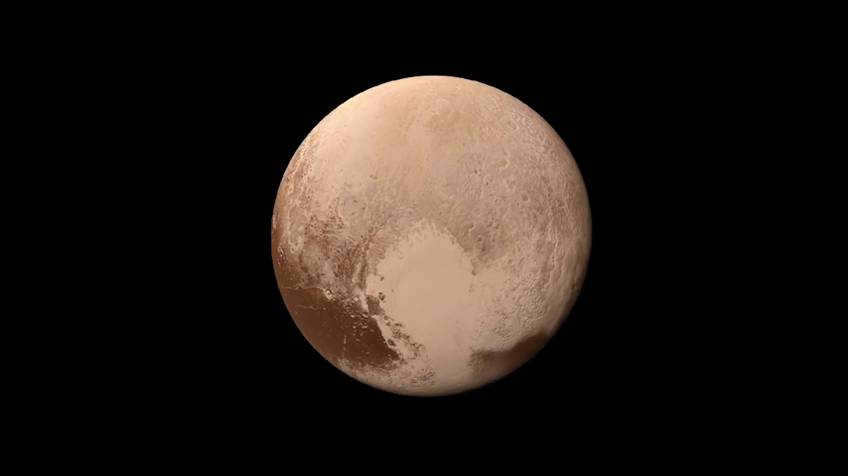
The length of a day on this planet is nearly 153 hours, and in terms of the duration of a year, it holds the record among the celestial bodies we have studied so far – equivalent to 248 Earth years.
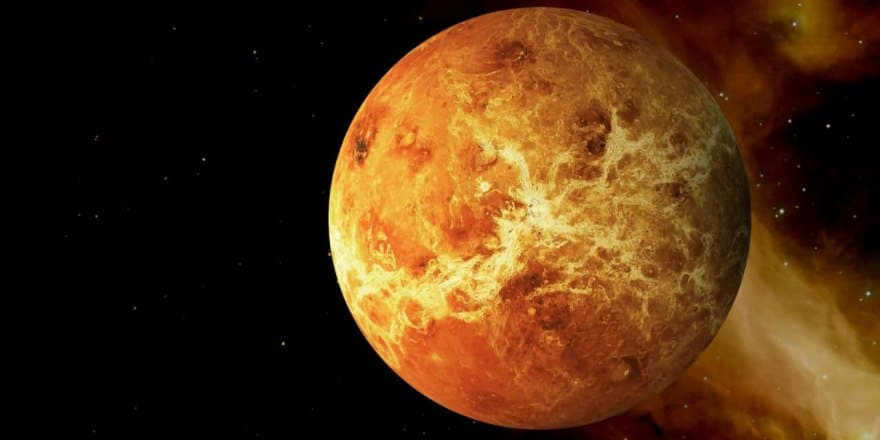
If our focus is on the study of rotations in space, we can categorize them into two types: axial and orbital rotations around a more massive celestial body. In this particular scenario, our curiosity lies in the axial rotation of Venus, as it is the only planet in the Solar System (excluding Uranus, which is tilted) that exhibits a rotation around its axis in the opposite direction. What could be the reason behind this phenomenon?
How the origins of rotation “rules” were established
The universe may appear chaotic, but the origins of these rules governing rotation are not entirely mysterious. The question of why planets rotate in a clockwise direction can be traced back to the formation of the solar system. It’s important to remember that all objects are influenced by the sun.
During the initial stages, there existed a massive disk composed of dust and gas, which served as the building blocks for planets, asteroids, and more. This disk rotated in a clockwise direction, and this rotational tendency was inherited by all the planets that formed within it. Therefore, clockwise rotation is considered the norm. However, Venus deviates from this norm by rotating in the opposite direction.
Scientists are currently exploring the issue
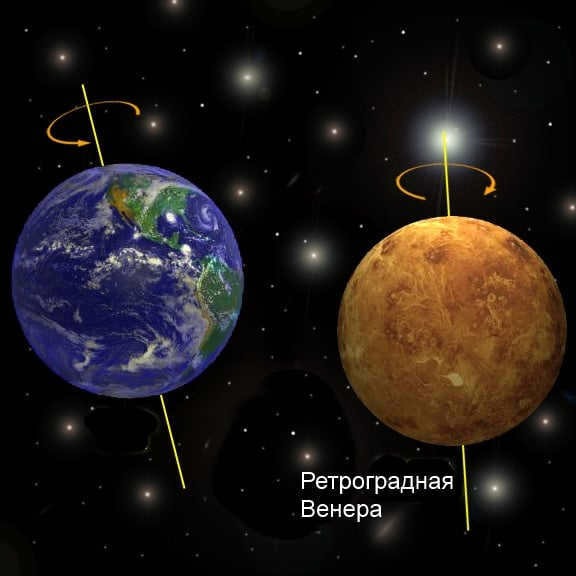
This phenomenon of rotating in the opposite direction is known as retrograde motion, and when a planet exhibits this type of motion, it is said to be in retrograde. Scientists began studying this planet during the previous century. Initially, they speculated about the possibility of life on Venus because its surface was concealed by a thick layer of atmosphere. However, their hopes were quickly dashed due to the extremely high temperatures and corrosive acid rain.
Nevertheless, one intriguing aspect that remained was the planet’s peculiar rotation. Venus rotates with an inclination of 177.36 degrees in an eastward direction. To this day, scientists are still grappling with finding a definitive explanation, but several hypotheses have been proposed.
An enormous asteroid
Back in 1965, this hypothesis gained significant popularity among numerous astronomers. The basis for this theory lies in the occurrence of a colossal celestial rock colliding with our planet during its early stages. The resulting impact was so intense that it caused Venus to reverse its rotational direction. However, the inability to conduct mathematical testing prevented the confirmation of this theory, mainly due to the immense size of the asteroid, which would have undoubtedly annihilated the planet.
The world has turned topsy-turvy
In 1970, it was postulated that the planet had initially been spinning in the opposite direction. It turns out that at some point in history, Venus flipped over completely. However, the question remains: how can such a phenomenon be explained? This is where theorists find themselves perplexed. After all, it is no simple task to upend the entire globe. Although some contend that the sun is to be held responsible (due to its powerful gravitational tugs).
The importance of the atmosphere
Despite its harsh environment, Venus possesses a thick layer of atmosphere. Interestingly, the planet’s mass is actually smaller than Earth’s. It is possible that the atmosphere is exerting pressure on Venus and causing it to rotate in the opposite direction. This phenomenon could also account for the planet’s slow rotation speed.
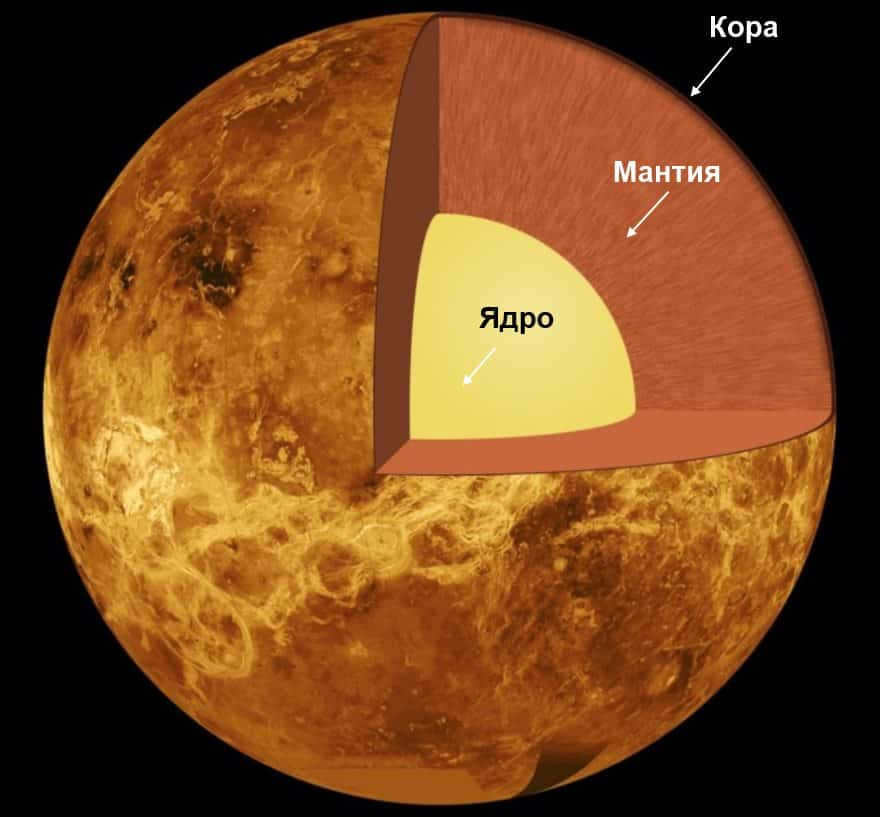
Venus’ structure consists of three main layers: the crust, mantle, and core.
Similar to other planets, Venus has a core, mantle, and crust. One theory suggests that there may have been friction between the crust and mantle, as well as tidal vibrations caused by the interaction between the atmosphere and the Sun. These factors could have resulted in a torque that caused the planet to become unbalanced and flip over. However, this scenario would only be possible if Venus was originally rotating at a 90-degree angle.
The Elusive Mercury
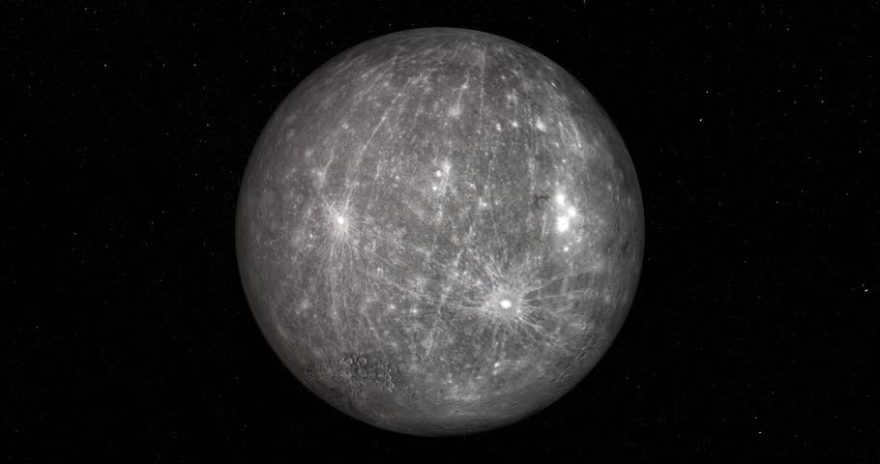
It’s a fascinating theory. It’s possible that in the past, Mercury wasn’t actually a planet but rather a moon of Venus! There might have been a collision for some unknown reason, causing the planet to start rotating in the opposite direction and leading to Mercury losing a significant portion of its outer layer and its orbit becoming curved.
There is a belief that the occurrence of this phenomenon was gradual and organic. However, the precise explanation remains unknown at this time. It is crucial to take into account numerous factors such as the distance from the Sun, atmospheric density, tilt angle, and so on. Scientists are persistently pursuing the search and will eventually discover a clue. What are your thoughts on this matter?
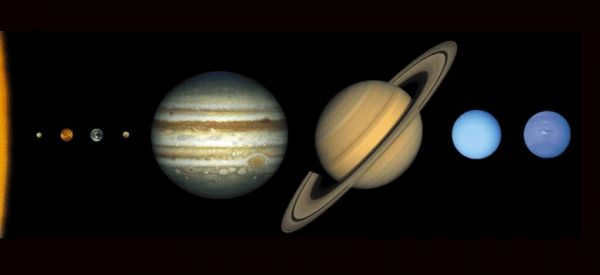
The solar system
One of the most enigmatic puzzles of our celestial system is the phenomenon of retrograde rotation. Scientists are inquisitive about which planet rotates in the opposite direction, what gives rise to this occurrence, and whether there are other astronomical entities that move counter to the overall plan?
In our system, Venus exhibits this kind of movement. Similarly, the massive Uranus and the dwarf planet Pluto from the Kuiper belt also rotate in an “unusual” manner. When observing the solar system from a top-down perspective, as if “ascending” from the North Pole, it becomes apparent that the majority of the planets orbit counterclockwise around their axes, except for these three. Furthermore, Charon, the companion of Pluto, and Triton, the companion of Neptune, also rotate in the opposite direction.
Niku, one of the trans-Neptunian objects hailing from the same Kuiper belt, possesses the distinctive trait of exhibiting retrograde motion. This remarkable celestial entity rotates on its axis in a direction opposite to that of other celestial bodies. The scientific community remains puzzled as to the reason behind Niku’s unconventional movement. It is worth noting that this reverse spin is not an uncommon occurrence in the vast expanse of the Universe and other planetary systems. If we were to cast our gaze beyond our own solar system and ponder the question, “Which planet exhibits retrograde rotation?” we would find numerous examples to consider.
- The gravitational field can be altered to cause a change in rotation.
- Solar tides are one possible explanation for the unusual rotation.
- The collision theory, which suggests that the sudden change in direction is caused by collisions between astronomical objects, is widely accepted.
To determine which planet rotates in the opposite direction and understand why, scientists employ various methods. They utilize state-of-the-art radio telescopes and perform precise mathematical calculations. Space exploration is conducted whenever possible. The accuracy of the answer to the question “Which planet in the solar system rotates in the other direction?” has been repeatedly confirmed by numerous spacecraft that have studied Venus.
In the vast expanse of the Universe, discovering which celestial body spins in the opposite direction can be determined by examining the tilt of their respective axes. This tilt is quantified by the angle between the axis of rotation and the perpendicular line to the orbital plane. A straight axis of rotation, aligning with the general direction, is indicated by an inclination ranging from -90 to 90 degrees. Celestial bodies with an inclination of 90 to 270 degrees are considered to have a retrograde rotation. The orbital inclination also provides information about the direction of the celestial body. When it comes to satellites, their orbital inclination is calculated in relation to the equatorial plane of their host planet.
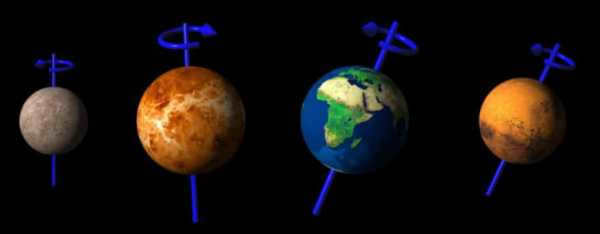
The planets revolving around the axis is a phenomenon that has intrigued scientists for centuries.
What causes Venus to rotate differently from other planets?
Venus, the celestial body known for its unique rotation, has been extensively studied in order to understand why it spins in the opposite direction compared to other planets. Several hypotheses have been put forth to explain this peculiar rotation.
- One theory suggests that during the early stages of the solar system, when it was forming from a spinning disk of gas and dust, Venus was initially rotating in the same direction as the other protoplanets. However, a collision with proto-Mercury caused Venus to change its direction of rotation.
- Another hypothesis suggests that the motion of Venus is slowed down and reversed by its thick, dense atmosphere.
- There is an intriguing theory that suggests the strong gravitational tides caused by the Sun’s influence, along with the friction between the mantle and the planet’s core, caused Venus to flip over. While the direction of rotation remains the same, it is perceived as being “upside down” due to this flip.
What Causes Pluto to Move in Retrograde?
Pluto is one of the unique planets in our solar system that rotates in the opposite direction. The reason behind this fascinating phenomenon is believed to be the influence of Neptune. It is hypothesized that a powerful explosion occurred within Pluto, causing it to break into two fragments of similar but slightly different masses. The smaller fragment gained enough velocity to escape the gravitational pull of Neptune, thus becoming an independent dwarf planet. Meanwhile, the larger fragment was captured by Neptune’s gravity and started orbiting it in a retrograde motion. This event has provided scientists with valuable insights into the mysteries of planetary motion and there are still many more discoveries awaiting us in the vast universe.
The discovery of Pluto’s retrograde motion has opened up new avenues for exploration and understanding of celestial bodies. As we continue to explore the cosmos, we are likely to uncover more planets that rotate in unconventional ways, expanding our knowledge of the diverse and dynamic nature of the universe.

Venus is the second celestial body in the solar system. It is situated between Mercury and Earth. The planet got its name from Venus, the goddess of love and beauty in Roman mythology. However, it was quickly discovered that the surface of the planet bears no resemblance to its namesake’s beauty.
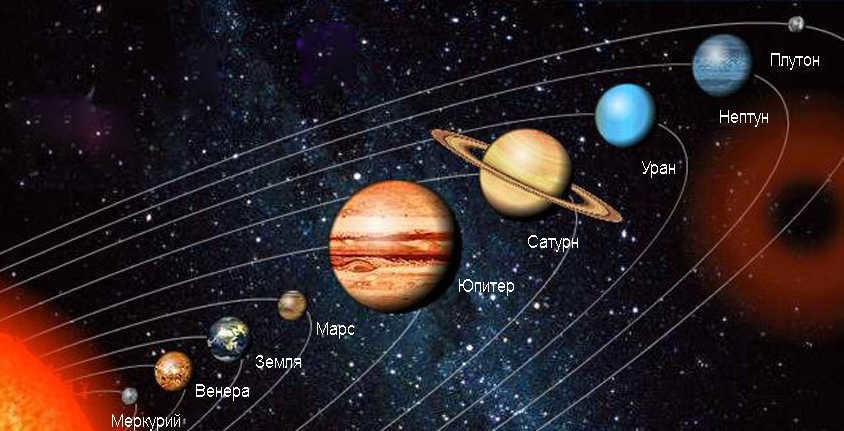
The knowledge about this celestial body was limited until the mid-20th century due to the dense clouds that concealed Venus from telescopic view. However, as technological capabilities advanced, humanity discovered numerous new and fascinating facts about this extraordinary planet. Many of these facts have posed unanswered questions.
Today, we will explore the hypotheses that seek to explain the counterclockwise rotation of Venus and share intriguing facts that planetologists currently know.
What is our current knowledge about Venus?
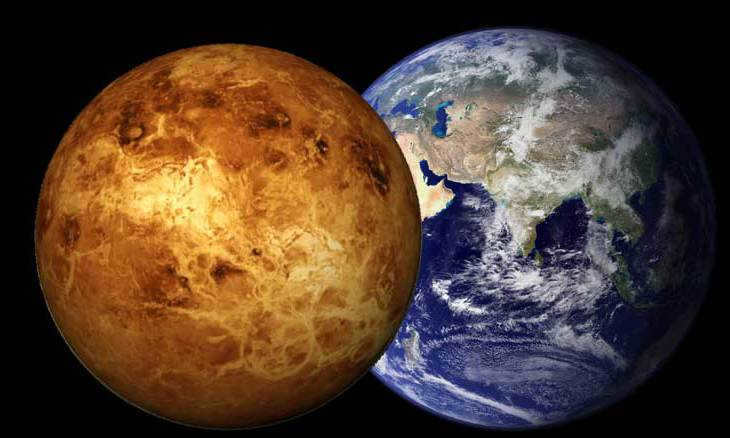
During the 1960s, scientists held optimistic beliefs that Venus could potentially support life due to its favorable conditions. These optimistic thoughts were portrayed in the works of science fiction writers who depicted Venus as a tropical paradise.
However, when spacecraft were finally sent to Venus and provided the first glimpse of its surface, scientists were faced with disappointing conclusions.
Not only is Venus completely uninhabitable, but it also has a highly corrosive atmosphere that destroyed several of the initial spacecraft sent into its orbit. Despite the loss of communication with these spacecraft, researchers were still able to gather information about the chemical composition of Venus’ atmosphere and surface.
Twin planet
It is now widely recognized that Venus and Earth share many physical characteristics. Both planets fall into the category of terrestrial planets, along with Mars and Mercury. Like these other planets, Venus and Earth have a limited number of satellites, possess relatively weak magnetic fields, and do not have a ring system.
In addition to these similarities, Venus and Earth also have comparable mass and size, with Venus being only slightly smaller than our own planet. Furthermore, they both follow similar orbital paths. However, despite these resemblances, Venus diverges significantly from Earth in other ways.
The conditions on Venus are extremely hostile, with an aggressive atmosphere composed of 95% carbon dioxide. The planet’s temperature is a scorching 475 °C, making it completely uninhabitable. Its surface is subject to intense pressure, 92 times greater than that on Earth, which would instantly crush any unfortunate individual who attempted to walk on it. Additionally, the presence of sulfur dioxide clouds results in precipitation of sulfuric acid, rendering the planet even more deadly. These clouds extend up to 20 kilometers in thickness. Despite its lyrical name, Venus is truly a nightmarish place.
How quickly does Venus spin on its axis? Recent research has revealed that a single day on Venus is equivalent to 243 Earth days. The planet rotates at a sluggish pace of only 6.5 km/h (in contrast, Earth rotates at a speed of 1670 km/h). Furthermore, one Venusian year lasts 224 Earth days.
What is the reason for the counterclockwise rotation of Venus?
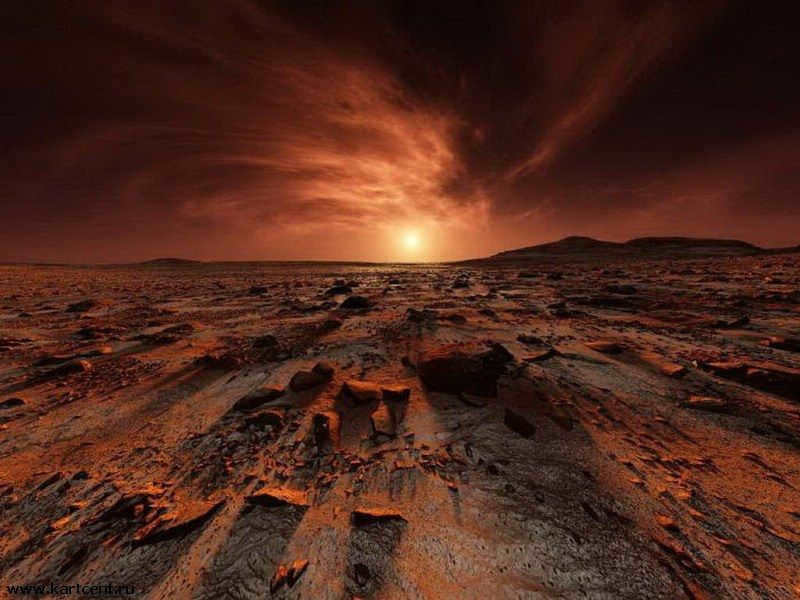
This particular query has intrigued scientists for decades. Nevertheless, up until now, nobody has managed to provide a definite answer. Numerous hypotheses have been put forward, yet none of them have been substantiated. Nonetheless, we will delve into several of the most popular and captivating theories.
The crux of the matter lies in the fact that when observed from an aerial perspective, Venus rotates in an anticlockwise direction, whereas all other celestial objects (excluding Uranus) rotate in a clockwise direction. This includes not only planets, but also asteroids and comets.
From the vantage point of the north pole, both Uranus and Venus exhibit a clockwise rotation, whereas all other celestial objects rotate counterclockwise.
Reasons for the counterclockwise rotation of Venus
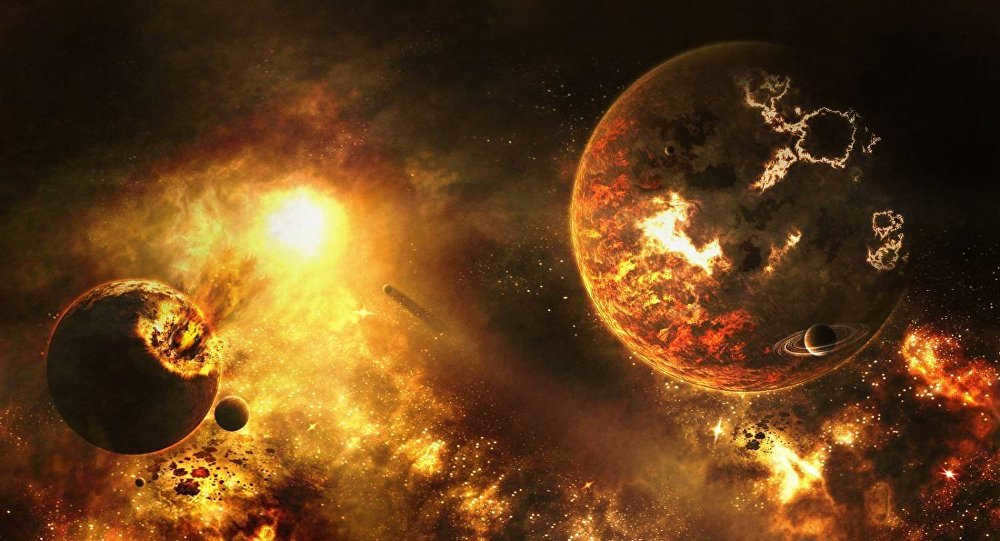
Nevertheless, what was the reason behind this departure from the usual pattern? What is the explanation for the counterclockwise rotation of Venus? There exist a number of widely accepted theories.
- Long ago, during the formation of our solar system, the Sun was surrounded by a singular disk of gas and dust. There were no planets present at this time. This disk rotated in a clockwise direction, and eventually, this motion was passed on to the other planets. A similar rotation pattern was observed for Venus. However, it is believed that Venus experienced a collision with a massive celestial body that came crashing into it against its natural rotation. This event seemingly “triggered” Venus to start rotating in the opposite direction. One possible culprit for this collision is Mercury. This theory is quite fascinating as it explains several surprising phenomena. It suggests that Mercury was once a moon of Venus, but it later had a tangential collision with Venus, transferring some of its mass to the planet. As a result, Mercury was propelled into a lower orbit around the Sun, which explains its curved orbit, while Venus continues to rotate in the opposite direction.
- The atmosphere of Venus has the ability to rotate the planet. It has a diameter of up to 20 kilometers and its mass is slightly smaller than that of Earth. The high density of Venus’ atmosphere exerts a strong pressure on the planet, which may be the reason for its slow rotation speed of only 6.5 km/hr.
- Other scientists have observed the peculiar rotation of Venus and have theorized that the planet is actually upside down. Although it continues to orbit the Sun in the same direction as other planets, its unique position causes it to rotate in the opposite direction. This phenomenon is believed to be influenced by the Sun’s gravitational forces, which create powerful tides and friction between Venus’ mantle and core.
Final thoughts
Venus, a member of the Earth-group planets, stands out due to its distinctive characteristics. The enigma of its retrograde rotation continues to baffle humanity. It is a puzzle that we hope to unravel in the future. Until then, all we can do is conjecture and formulate hypotheses.
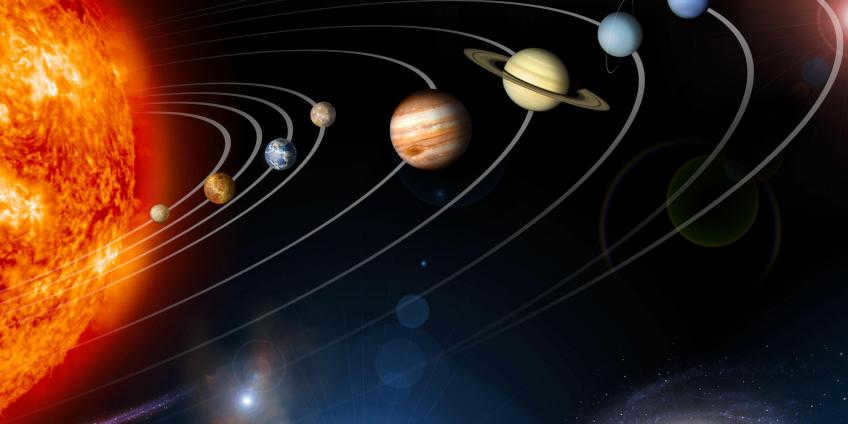
Retrograde motion refers to the movement of celestial bodies that goes against the direction of their usual motion. It is a term used to describe the less common or exceptional motion observed in the majority of celestial objects. For example, all eight planets in our Solar System typically orbit in a direct, or prograde, motion. However, there are instances when a planet or other celestial body may exhibit retrograde motion, which is the opposite of the usual counterclockwise motion when viewed from the north pole. Retrograde motion is characterized by a clockwise motion when observed from this perspective.
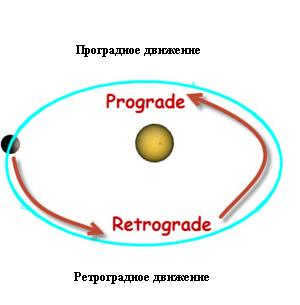
The motion of planets can be classified into two types: prograde and retrograde.
Retrogrades can be observed in the movement of planets and other objects in planetary systems, such as satellites, asteroids, comets, or stars in multiple systems. The possibility of retrograde rings exists in theory. Furthermore, many celestial bodies exhibit retrograde rotation around their axis. According to current theoretical concepts, retrograde motion or rotation can be caused by either catastrophic collisions or gravitational capture. The proportion of retrograde orbits is particularly high in the latter scenario: theoretical simulations indicate that in cases of gravitational capture, the most likely outcome is an orbit with retrograde motion. On occasion, retrograde motion can be observed when observing the movement of planets in the Solar System from Earth’s perspective: during the phenomenon known as “looping” motion, the planets can move in both forward and backward directions.
Furthermore, it is possible to launch artificial satellites into retrograde orbits. The sole country that conducts launches in the opposite direction of the Earth’s rotation is Israel. The reason behind this is due to Israel’s tense relationships with its neighboring countries. As a result, Israeli space rockets are launched towards the west, crossing over the neutral waters of the Mediterranean Sea. From 1988 to 2016, Israel successfully carried out 10 space launches in this manner, with 8 of them being successful. During these launches, the satellites were placed into orbits with an inclination of approximately 140 degrees. Additionally, there are often polar orbits of Earth remote sensing (ERS) satellites, which have orbital inclinations slightly above 90 degrees. One of the most commonly used polar orbits, known as the sun-synchronous orbit, has an inclination of 98 degrees. An interesting characteristic of a Sun-synchronous orbit is that no shadow sections of the orbit are observed for an artificial satellite in such an orbit.
Ancient astronomers were the first to observe the phenomenon of retrograde motion in celestial objects within our Solar System. For instance, Halley’s comet, which has been observed for centuries, has an orbit inclination of 162 degrees. This means that it moves in a direction opposite to the majority of celestial bodies. The discovery of retrograde rotation in a planetary system occurred in the late 18th century with the observation of Uranus. In the mid-19th century, scientists also discovered Triton, a moon of Neptune, which orbits in a retrograde direction. More recently, in 2009, astronomers announced the discovery of the first known retrograde planet, HAT-P-7b, which is a hot Jupiter that transits its star.
Retrograde movement observed in the inner planets of our Solar System
Venus is Earth’s closest neighbor in the solar system, but its surface remains hidden behind a thick layer of atmosphere. Unlike other planets like Mars and Jupiter, Venus doesn’t have many permanent features visible on its surface. There are only a few small dark spots that can be seen. In the past, astronomers believed that Venus rotated at a similar speed to Earth. In 1667, French astronomer Domenico Cassini estimated Venus’ rotation period to be 23 hours and 21 minutes. However, it was later discovered that Cassini had been fooled by an optical illusion. He observed Venus on two different nights, with a one-day difference in between. It is now known that Venus’ atmosphere undergoes a phenomenon called superrotation, where it completes one revolution in 4 days. In the late 19th century, Italian astronomer D. Schiaparelli proposed that Venus’ rotation period was equal to its year, which is 225 days. This theory was based on the fact that Venus and Earth have different rotation periods: 13 Venus revolutions around the Sun equals 8 Earth revolutions.
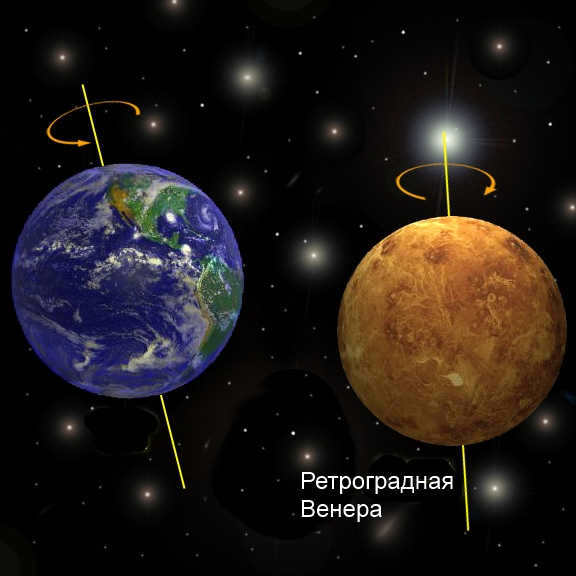
With the advent of radar, everything was revolutionized as it enabled scientists to peer beneath the surface of Venus. The USSR, USA, and Great Britain were the pioneers in conducting the first radiolocation of Venus in 1961. In the subsequent year, the USSR successfully gathered data revealing Venus’s remarkably slow rotation in the opposite direction, taking approximately 300 days for a complete revolution.
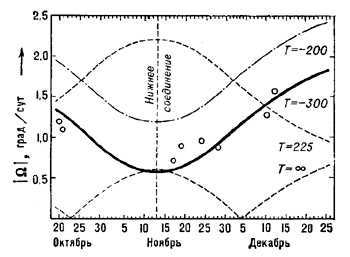
In 1963, American radio astronomers published a more precise measurement of 240 days for the Venusian year, which is significantly shorter than Earth’s year of 365 days.
Subsequently, radio astronomers became convinced over the following years that Venus has a tilt in its axis of rotation of 177 degrees. Interestingly, recent studies from spacecraft have revealed significant fluctuations in Venus’s rotation period. For instance, a comparison of data from the Magellan and Venus Express probes, which were collected 16 years apart, showed that a day on Venus has slowed down by 6.5 minutes.
The primary cause of Venus’ retrograde rotation is believed to be a significant impact event. The slow rotational period of Venus is often attributed to the tidal forces exerted by the planet (in comparison, Mercury completes one rotation in 59 days while orbiting the sun in 88 Earth days). However, recent findings indicating rapid changes in the rotation period suggest that the dense and massive atmosphere of Venus also plays a crucial role in slowing down its rotation. It is worth noting that the planet’s retrograde rotation causes the atmosphere to rotate in the opposite direction with a period of 4 days.
Retrograde movement in the planets located beyond the Sun in the Solar System
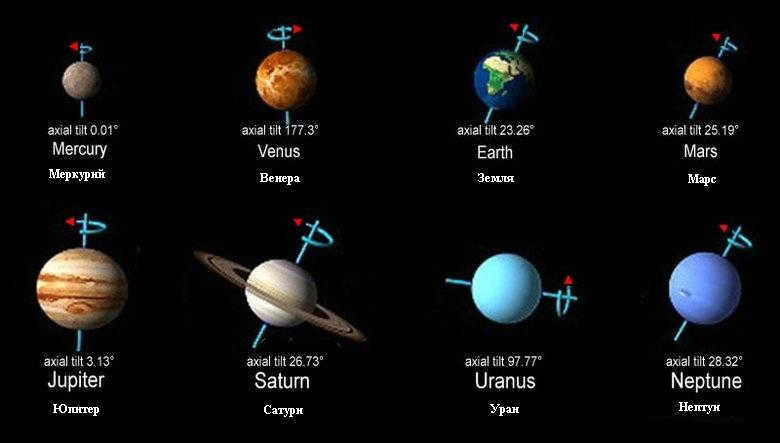
The phenomenon of planets moving in a backward direction, known as retrograde motion, has long captivated astronomers and scientists alike. One of the notable instances of retrograde motion occurred in the spring of 1781 when a curious moving object caught the attention of William Herschel, a passionate astronomer hailing from England. Through subsequent observations, it was unveiled that this enigmatic object was, in fact, a previously unknown planet within our Solar System. This extraordinary discovery marked a significant milestone in the history of astronomy, as Uranus became the first planet to be identified during the telescopic era.
Resources about the subject
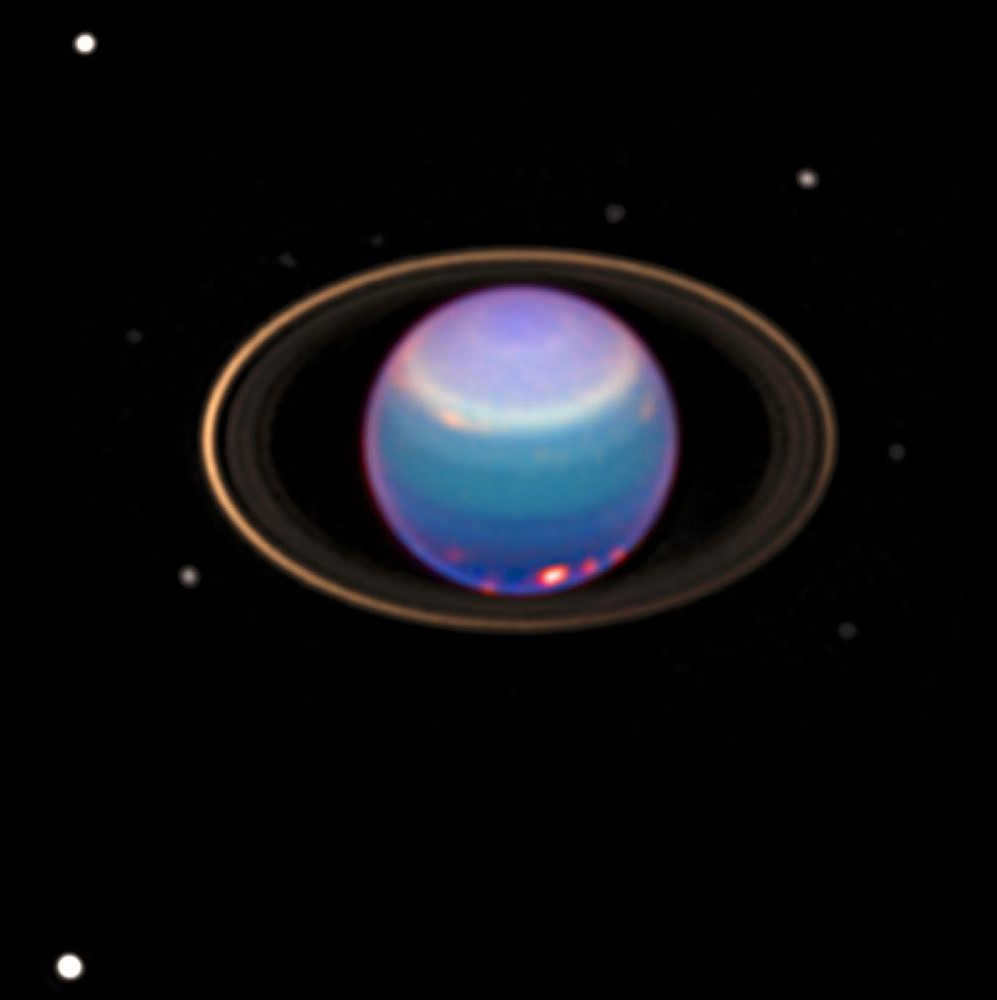
Retrograde Motion Among Small Bodies in the Solar System
Historically, comets were the original celestial bodies discovered to exhibit retrograde motion. One well-known example is Halley’s Comet, which has been observed since at least 239 B.C. Its orbit has an inclination of 162 degrees.
On the flip side, over 85% of small comets near the Sun have retrograde orbits. These comets, with diameters ranging from tens of meters, have been extensively studied by the SOHO solar observatory over the span of 23 years. More than 3 thousand of these comets have been identified. The majority of them belong to the Kreutz group. It is believed that this group was formed as a result of the fragmentation of a much larger comet with a nucleus diameter of around 200 kilometers and an orbital inclination of about 144 degrees.
Retrograde orbits are highly uncommon among non-cometary entities such as asteroids or Kuiper belt objects. Consequently, out of the over 700,000 minor planets listed in the catalog, only 96 possess retrograde orbits. Interestingly, just two of these objects have an orbital semi-major axis of less than 5 a.u.: 2009 HC82 and 2010 EQ169. It appears that all of these objects may be classified as dormant comets, meaning they have either depleted all their volatile substances or are situated too distantly from the Sun to engage in cometary activity.
When we compare them, we can see that there are around 2,000 retrograde objects among ordinary comets. It seems that most of these retrograde objects in our Solar System were actually captured from interstellar space. Unlike the usual objects in our Solar System that formed from the protoplanetary disk, these retrograde objects have very little inclination to the ecliptic and the Sun’s equatorial plane. It is interesting to note that the very first interstellar object that was discovered in November 2017 also had a retrograde trajectory with an inclination of 123 degrees.
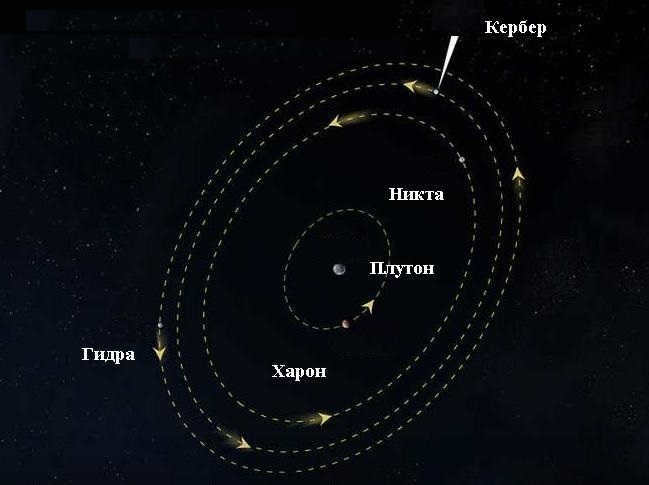
The system of satellites of Pluto
The number of small planets in the Solar System that have known rotation axis parameters or known satellites is incredibly small. Consequently, the total count of small planets with known satellites is a mere three hundred. Among these systems, the most well-documented case of a retrograde orbit is the orbit of Charon, the companion of the dwarf planet Pluto. Charon’s inclination to the ecliptic is 113 degrees, which provides strong evidence for the impact formation of this particular system. Furthermore, the Pluto system boasts the highest number of known satellites compared to all other small planets in the Solar System, with a grand total of five discoveries. The orbits of all five of these satellites are found to be roughly aligned in the same plane. It is highly likely that all six objects in this system are tidally locked, meaning that their surfaces consistently face each other on the same side. Another indication supporting the impact hypothesis is the relatively low density of Pluto. Pluto is the largest celestial object beyond the orbit of Neptune (it is several tens of kilometers larger than Eridas), yet its mass is approximately 25% less than that of Eridas.
Retrograde movement beyond the boundaries of the Solar System
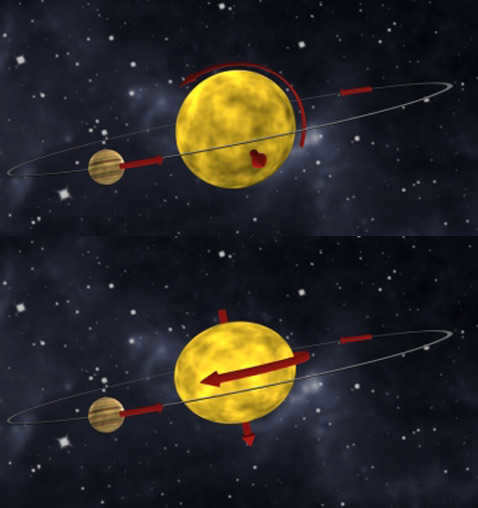
In recent years, there has been a significant advancement in the ability to observe planetary systems in distant stars and their protoplanetary disks. So far, scientists have discovered approximately 4,000 exoplanets. These discoveries have revealed that it is common for stars to have small planets located close to them, even within the orbit of Earth.
By measuring the radial velocities of stars with known transiting planets, scientists are able to determine the angle between the star’s equator and the plane of the planet’s orbit, also known as the Rossiter-McLaughlin (RM) effect. Currently, this effect has been measured for 134 transiting planets.
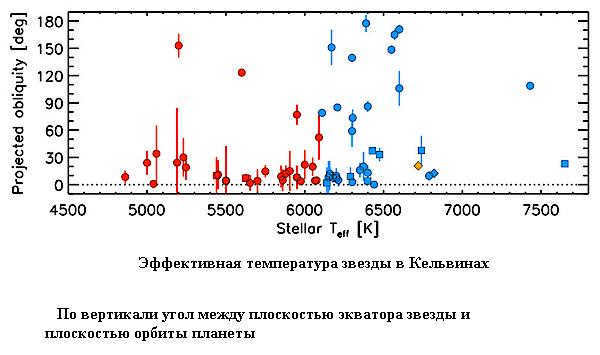
According to the measurements of the angles, it has been observed that the majority of transiting planets have orbits that are closely aligned with the equatorial plane of their respective stars.
Interestingly, as depicted in the aforementioned diagrams, certain transiting planets even display retrograde rotation. Theorists propose that these peculiar orbits may be attributed to the existence of other massive bodies within the system, such as planets or stars.
The first retrograde planet to be discovered was HAT-P-7b, a hot Jupiter, in 2009. Subsequently, more retrograde planets were discovered, including the Hot Neptune HAT-P-11b and hot Jupiters HAT-P-6b, HAT-P-14b, KELT-17b, KELT-19b, Kepler-56b, Kepler-56c, Kepler-63b, WASP-2b, WASP-8b, WASP-15b, WASP-17b, WASP-33b, WASP-60b, WASP-76b, WASP-79b, WASP-94b, WASP-121b, and WASP-167b. Out of the 134 transiting planets studied, a total of 20 have retrograde orbits, making up approximately 14% or 1 in 7 of the studied planets. This fraction is slightly higher than that of the Solar System, where the lack of known retrograde planets sets an upper limit of 13%.
Only a few planetary systems with retrograde planets have been found to have companion stars. These systems are limited to WASP-2 and WASP-94, which make up just 10% of the known systems with retrograde planets. The reason for this small number of double systems could be attributed to the limited research done on these planetary systems, as most retrograde planets have only been discovered in the past decade. Conversely, the scarcity of known double star systems among retrograde planets may suggest that close stars in star-forming regions play a significant role in destabilizing planetary systems during their formation.
Aside from retrograde motion and rotation in astroseismology, there is also the concept of retrograde oscillations, which propagate against the direction of stellar rotation.
